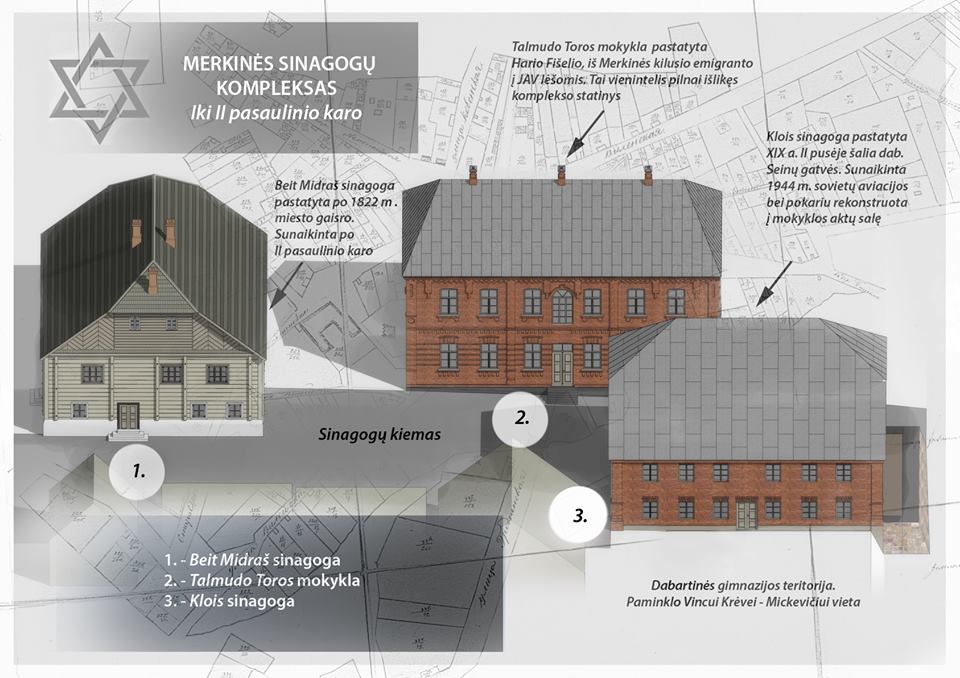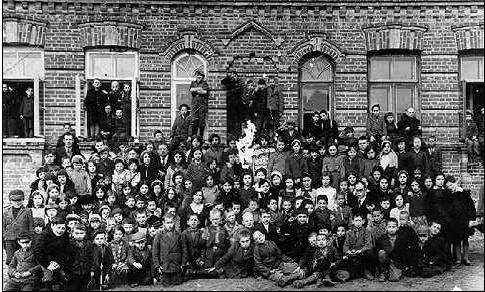Merkinė Jewish school, ca. 1928-1930
by Mindaugas Černiauskas
“Decades have passed since I left you, Merkinė. You are always on my mind. Every day I walk your small crowded streets in my thoughts. I know it’s not real, but I haven’t learned to come to terms with the fact the terror of the Holocaust was also in my town.” –Dorit Blatshtein, refugee from Merkinė.
Exactly 78 years ago the Jews of Merkinė were marched to the sand pits in Kukumbalis forest and left there for the ages powerless and desecrated. The introduction of the book “Mano senelių ir prosenelių kaimynai žydai” [My Grandparents’ and Great-Granparents’ Jewish Neighbors] published in 2003 contains the line that “the destruction of the Jews of Lithuania was so blood-curdling and unexpected, so cynical and public, accomplished right here in view of all other residents, that it essentially touched in one way or another every member of society.”
It’s difficult not to agree with this, as it is difficult not to agree with the idea that traumatic experience is often pushed into the subconscious. It’s clear experience doesn’t disappear and can become a festering wound and neurosis, especially when we view history based on idealized versions of national history where we only want to see examples of goodness, beauty and harmony which make us proud.
In 2016 the Merkinė museum carried out a project to create a computerized 3-D map of the Merkinė synagogue complex. Based on archival material, old photographs and surveying information at the site, a three-dimensional image of the non-extant Merkinė synagogue complex was created. The complex was located on what is now the site of the Vincas Krėvė gymnasium. The only surviving building not touched by war or fire from the three-building complex is the Talmud-Torah school building built in 1923 on the site of the Great Synagogue which burned down during World War I. Today the building houses a library and gymnasium classrooms. The Klois synagogue of red brick was bombed by Soviet aircraft in 1944. It was rebuilt after World War II and is now an events hall for the school. The wooden Beit Midrash synagogue was built after the fire which ravaged the town in 1822 and is thought to have been destroyed during the Soviet era because a small map given to the partisans who attacked the town on December 15, 1945, indicates this site was a warehouse with the same dimensions and floor plan of the synagogue. Extant photographs don’t give a full picture of the situation of the buildings, but were sufficient to try to reconstruct a general image of the synagogue complex. This was done. The project was supported by the Lithuanian Cultural Heritage Department under the Lithuanian Ministry of Culture. Žygimantas Buržinskas and Aurimas Širvys created the 3-D map of the Merkinė synagogues. Mindaugas Černiauskas was project coordinator.

It’s a normal thing not to want to talk about a painful past. But it would be abnormal if we tried to live as if none of these experiences ever happened. This is part of a larger topic.
Merkinė Regional History Museum
Short film about the Merkinė Jewish community:


